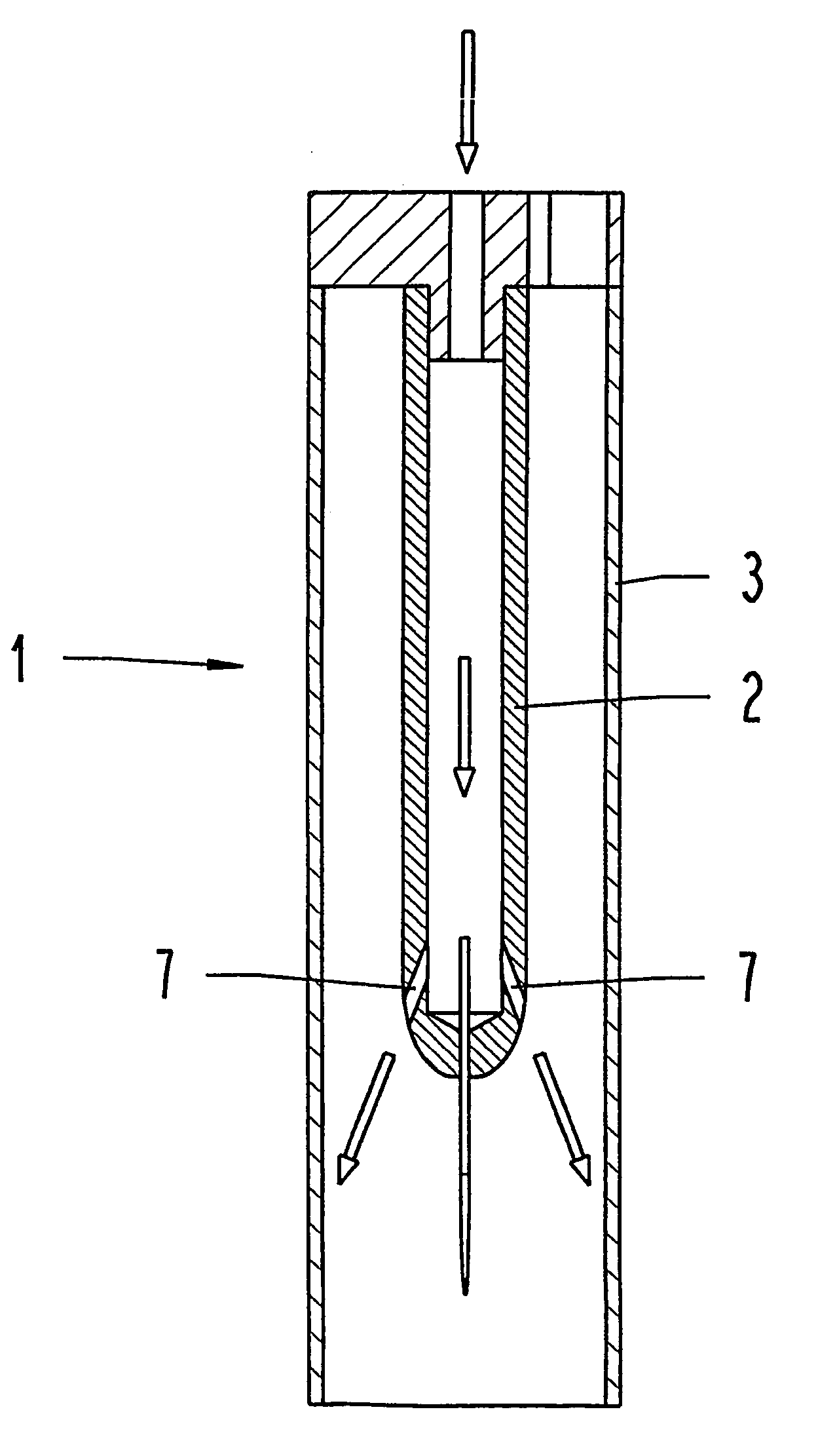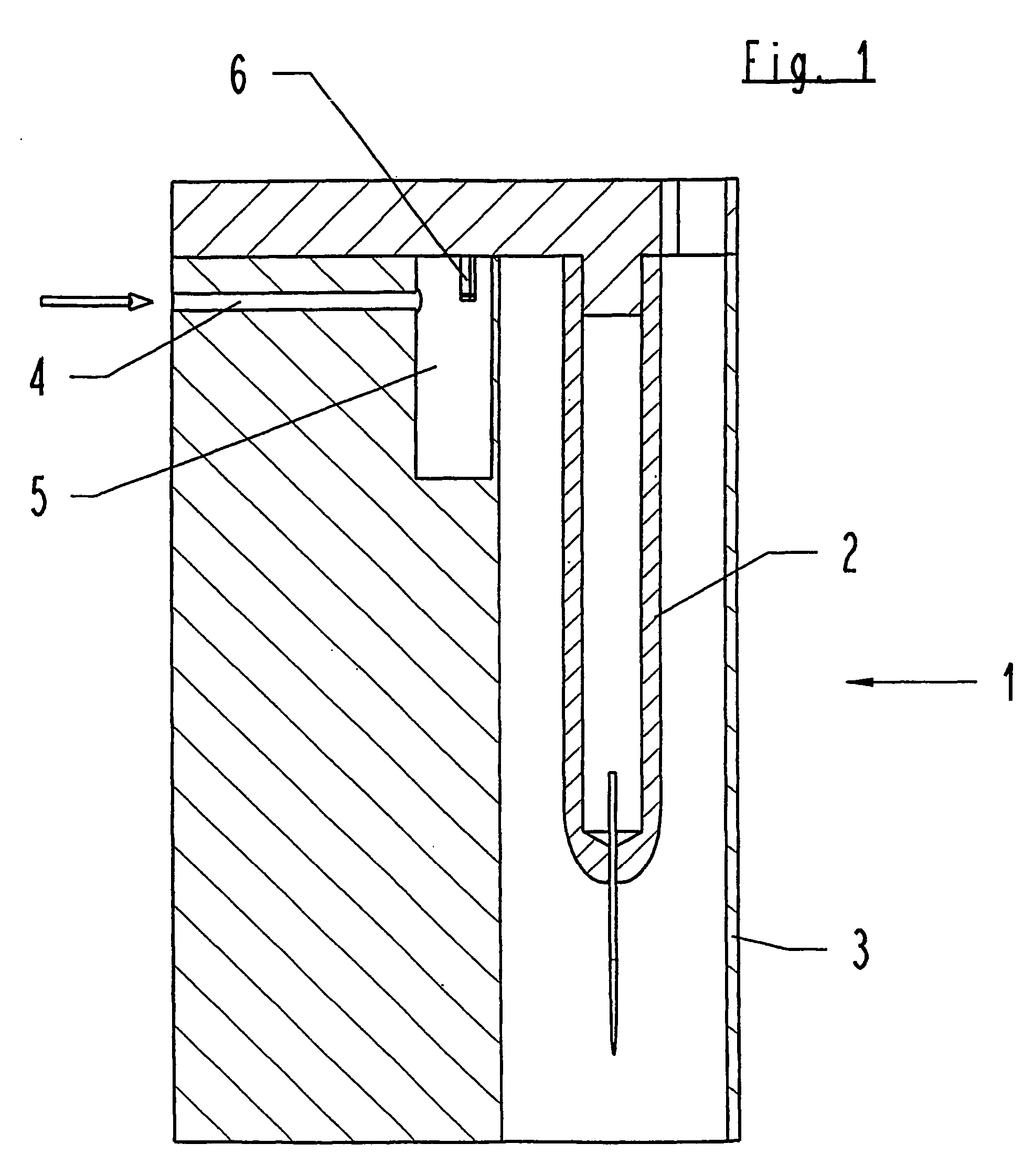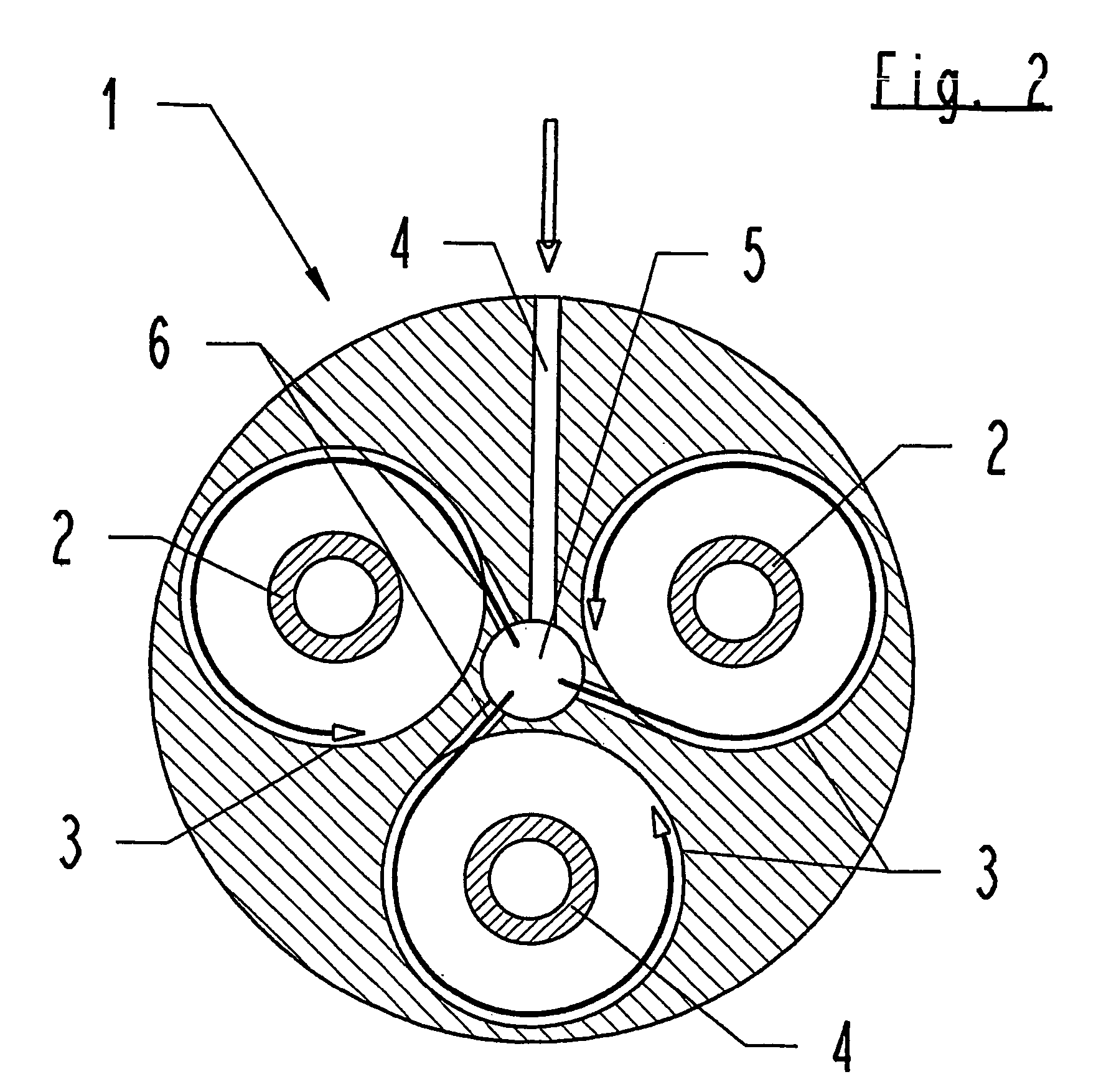Electric separator with a rinsing cleaning system
a technology of cleaning system and separator, which is applied in the direction of electrode cleaning, electrostatic separation, coupling device connection, etc., can solve the problems of inability to clean the separator for a long time, and inability to effectively remove hardened deposits. to achieve the effect of reliable electrode cleaning
- Summary
- Abstract
- Description
- Claims
- Application Information
AI Technical Summary
Benefits of technology
Problems solved by technology
Method used
Image
Examples
Embodiment Construction
[0030]In FIG. 1, numeral 1 designates in general an electric separator that is arranged in the airflow of the crankcase ventilator of an internal combustion engine. As can be seen in particular from FIGS. 2 and 3, the separator 1 features three separator chambers in which respectively one emission electrode 2 is arranged and in which the tubular housing surface forms a cylindrical collecting electrode 3.
[0031]Oil reaches a distributor bore 5 via a supply line 4, and injection channels 6 lead tangentially from this distributor bore 5 to the collecting electrodes 3. As indicated by the arrows shown in FIGS. 2 and 3, the oil runs in a helical manner downwards on the inner surface of the collecting electrode 3, whereby it is provided in the exemplary embodiment shown that the assembly position according to FIGS. 1 and 3 is oriented with the free end of the emission electrode 2 pointing downwards. Assisted by gravity, the cleaning fluid, in the present case oil from the crankcase of the ...
PUM
 Login to View More
Login to View More Abstract
Description
Claims
Application Information
 Login to View More
Login to View More - R&D
- Intellectual Property
- Life Sciences
- Materials
- Tech Scout
- Unparalleled Data Quality
- Higher Quality Content
- 60% Fewer Hallucinations
Browse by: Latest US Patents, China's latest patents, Technical Efficacy Thesaurus, Application Domain, Technology Topic, Popular Technical Reports.
© 2025 PatSnap. All rights reserved.Legal|Privacy policy|Modern Slavery Act Transparency Statement|Sitemap|About US| Contact US: help@patsnap.com



